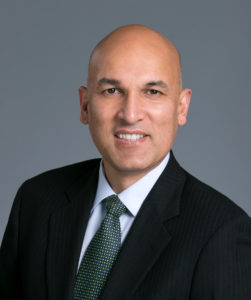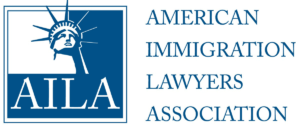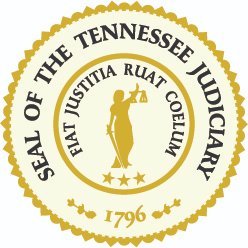What is a PERM: Complete Guide
Obtaining a Lawful Permanent Resident (a.k.a. Green Card) is a multi-step process. In most instances, before the U.S. employer can file an immigrant petition on behalf of the beneficiary, the employer must file and obtain a labor certification on behalf of the beneficiary.
Labor Certification, commonly called PERM (Program Electronic Review Management) is a document on which the Department of Labor (DOL) certifies, to the US Citizenship & Immigration Services (USCIS), that there are not sufficient able, willing, qualified and available U.S. worker to accept the job opportunity in the area of intended employment and that the employment of the beneficiary will not adversely affect the wages and working conditions of similarly employed U.S. workers.
Procedure & Requirement
- The beneficiary of the PERM must have an existing permanent job offer from the U.S. petitioner.
- The offered wages must be equal to or above the DOL prevailing wage.
- The labor market, at the place of employment, must be analyzed by conducting a recruitment process before submitting the PERM application.
Related Issues
- Once the PERM is certified, the petitioner must file an immigrant petition with the USCIS before the expiration of PERM.
- PERM regulations mandates recruitment steps for both professional and non-professional position.
- The recruitment steps must be concluded at least 30 days but no more than 180 days before the filing of the PERM.
- The first step in the PERM process is for the U.S. petitioner to request for a “prevailing wage determination” with the DOL.
PERM: Questions & Answers
PERM is a U.S. Department of Labor (DOL) Program, which stands for Program Electronic Review Management. This process was implemented in March 2005 to streamline the labor certification process.
The purpose of the PERM application is to “test the U.S. labor market” to demonstrate to the DOL that there are no qualified, able, willing, and available U.S. workers for the position being offered to the PERM beneficiary.
According to the regulations, United States worker means only the following: (1) U.S. citizen; (2) U.S. National; (3) Lawfully admitted for permanent residence; (4) Granted the status of an alien lawfully admitted for temporary residence under 8 U.S.C. 1160(2), 1161(a), or 1255a(a)(1) {these are applicants for amnesty under the three prongs of the Immigration Reform and Control Act of 1986}; (5) Admitted as a refugee under 8 U.S.C. 1157 {refugees are persons granted refugee abroad in a refugee center prior to entering the U.S.}; or (6) Granted Asylum under 8 U.S.C. 1158 {Asylees are persons granted asylum in the United States by the USCIS asylum office or by an Immigration Judge.
Before a PERM application can be submitted with the Department of Labor (DOL) there are various recruitment processes that needs to be completed by the employer, including but not limited to obtaining the prevailing wage, consequently the entire processing time might vary. The current processing time for a PERM application is between 18 and 24 months (as of the date this FAQ was written).
The PERM labor certification process generally takes about 6 to 10 months, but this can vary widely depending on the Department of Labor's (DOL) workload, DOL audit, etc. If the PERM application is audited by the DOL, the processing time can extend to over a year. It is essential to monitor the DOL’s official website or consult with an immigration professional to get the current processing timeframes, as they can fluctuate based on policy changes and processing volumes.
The PERM Prevailing Wage Determination (PWD) is a mandated by the DOL to determine the appropriate wage for a specific job position within the context of the PERM labor certification process. It sets the minimum salary an employer must offer to ensure that the employment of foreign workers does not negatively affect the wages of similarly employed U.S. workers. The PWD is based on the job's educational and experiential requirements, location, and duties, comparing them with wages for equivalent positions in the same geographic area. The PWD must be obtained before filing the PERM application, and the offered wage on the PERM must meet or exceed the determined prevailing.
The job opportunity requirements listed in a PERM labor certification must represent the actual minimum requirements necessary to perform the duties of the position. These requirements should be consistent with the industry standards and cannot be tailored to the beneficiary’s background. The purpose of these requirements is to ensure that the position is genuinely available to U.S. workers and that the employer is not excluding able, willing, qualified, and qualified U.S. workers by creating artificial requirements based on the foreign worker’s unique background. Essentially, the PERM job requirements should reflect the employer's true minimum requirements and must not be artificially inflated in a way that would unduly favor the foreign worker over the U.S. workers.
All PERM applications, whether for a professional or non-professional occupation, require the following recruitment steps:
- Job order with the State Workforce Agency serving the area of intended employment.
- Two Sunday print advertisements in a newspaper of general circulation in the area of intended employment.
- Notice of Filing to be posted at the job site for a period of 10 consecutive business days.
In addition to the three mandatory recruitment steps mentioned above, the DOL requires 3 additional recruitment steps to be completed. The employer must choose 3 from the following list:
- Job Fairs.
- Employer’s company website.
- Job search website.
- On-Campus recruiting.
- Trade or professional organization.
- Private employment firms.
- Employee referral program.
- Campus placement office.
- Local or ethnic newspaper.
- Radio or TV advertisement.
A job order for PERM is a mandatory step in the PERM labor certification process where the employer places a job order with the State Workforce Agency (SWA) in the state of intended employment. This job order must run for a minimum of 30 days and is for the purposes appraising the U.S. workers of the job opportunity.
The Notice of Filing (NOF) is a requirement within the PERM labor certification process wherein an employer must post a notice at the workplace announcing the intent to hire a foreign worker. This notice must be clearly displayed for at least ten consecutive business days at a location where the employer's current employees can view it, typically in an area designated for job postings or in an electronic or physical bulletin board. The purpose of this notice is to inform current employees of the company’s intention to apply for labor certification on behalf of a foreign national, giving them an opportunity to file complaints or claims if they believe that the hiring process may violate applicable laws or regulations. This notice must contain specific information about the job such as the position, wage, and location, and it also includes instructions for reporting any potential irregularities to the DOL.
The "cooling off period" before submitting a PERM application refers to a mandated time frame before which recruitment efforts, including the job order, have to be completed and documented before the employer can file the PERM application with the DOL. This period is essentially a waiting time to ensure that all recruitment activities are conducted in good faith and U.S. workers have had a fair chance to apply for the job vacancy. Typically, the cooling off period is 30 days after the last recruitment step. Employers must wait until this 30-day period has passed to file the PERM application, but the application must also be filed within 180 days of the commencement of recruitment efforts to ensure that the labor market test results are current.
The recruitment takes places for the location of the job opportunity.
No, the DOL does not require the prevailing wage to be listed anywhere other than NOF, however some state SWAs does require the wage to be listed on the Job Order. If the PERM beneficiary is offered more than the prevailing wage, then the higher offered wage must be listed.
Yes, the NOF must include the prevailing wage. Again, if the PERM beneficiary is offered more than the prevailing wage, then the higher offered wage must be listed.
The recruitment is valid for 180 days. The clock starts on the very first day of when the recruitment is initiated if the recruitment is initiated after prevailing wages is issued OR the date the prevailing wage expires if the recruitment is initiated before prevailing wage is issued.
No, according to the PERM regulations, the employer must pay for the entire process (legal fees, advertisement costs, and any other associated costs related to the PERM application).
No, according to the PERM regulations, the beneficiary is not allowed to be involved in the recruitment process.
There is no requirement for the beneficiary to be employed with the petitioner at the time of filing the PERM application as long as the employer has Ability to Pay (ATP) the prevailing wage listed on the labor certification. This ATP has to be demonstrated from the time the PERM application is filed and must continue till the day the beneficiary obtains his lawful permanent residency.
No, it does not. All H-1B visa holders are allowed to enter the U.S. to work temporarily while simultaneously seeking lawful permanent resident status.
Unfortunately, the PERM Labor Certification cannot be expedited. The employer can speed up the process by starting the recruitment steps while the PWD request is pending, however, there are multiple pros/cons to consider before moving forward with this option.
Meet Attorney Asheesh Sharma – Your Trusted Advisor
With years of experience in employment-based immigration, Sharma Law Offices has a proven track record of successful cases. Our nuanced understanding of U.S. immigration laws ensures that your case is in capable hands.



